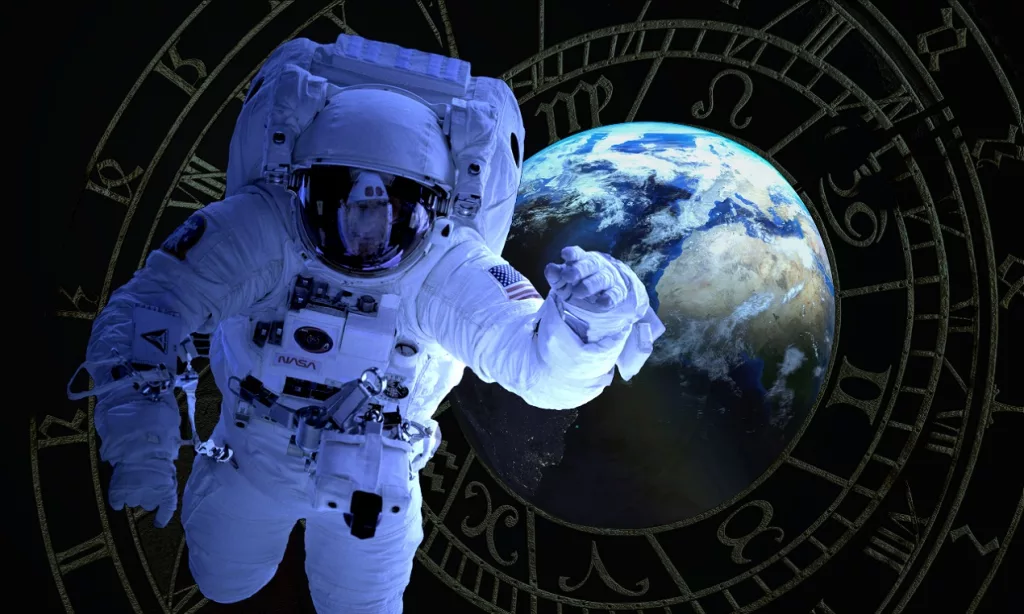Can Aerospace Engineering Lead You to Becoming Astronaut?

Aerospace engineering is a highly specialized field that deals with the design and development of aircraft and spacecraft. Many individuals who pursue this degree are interested in working for organizations like NASA and becoming an astronaut. The question is, can you become an astronaut with an aerospace engineering degree?
The answer is yes, it is possible to become an astronaut with an aerospace engineering degree. In fact, having an engineering background is highly valued by NASA. However, having an aerospace engineering degree alone is not enough to become an astronaut. There are several other qualifications and requirements that must be met.
To become an astronaut, candidates must meet a variety of qualifications and requirements, including having a master’s degree in a STEM field, being a U.S. citizen, and passing a rigorous medical examination. In addition, candidates must have experience in a relevant field such as engineering, science, or math, and possess additional skills like leadership, communication, and teamwork. While an aerospace engineering degree is a great starting point, it is just one piece of the puzzle in becoming an astronaut.
Key Takeaways
- Having an aerospace engineering degree is a great starting point to becoming an astronaut, but it is not enough on its own.
- Candidates must meet a variety of qualifications and requirements, including having a master’s degree in a STEM field, being a U.S. citizen, and passing a rigorous medical examination.
- Additional skills like leadership, communication, and teamwork are also necessary to become an astronaut.
Aerospace Engineering and Its Relevance to Becoming an Astronaut
Aerospace engineering is a branch of engineering that deals with the design, development, and testing of aircraft and spacecraft. It involves the application of principles from physics, mathematics, and materials science to create vehicles that can travel through the atmosphere and beyond.
Aerospace engineering is a relevant field of study for those who aspire to become astronauts. Astronauts are required to possess a master’s degree in a STEM field, including engineering, from an accredited institution. An aerospace engineering degree provides the necessary scientific and technical background for a career in space exploration.
Aerospace engineers are involved in the design and construction of spacecraft, as well as the development of the technologies required to explore space. They work on projects such as designing and testing spacecraft, developing propulsion systems, and creating life support systems for manned missions.
In addition, aerospace engineers are responsible for ensuring the safety of the crew and the success of the mission. They must design spacecraft that can withstand the harsh conditions of space, including extreme temperatures, radiation, and vacuum.
Overall, an aerospace engineering degree provides the necessary skills and knowledge for a career in space exploration. It is a challenging and rewarding field that requires a strong foundation in mathematics, physics, and materials science. Those who are interested in becoming astronauts should consider pursuing a degree in aerospace engineering to prepare for a career in space exploration.
Key Takeaways
- Aerospace engineering is a branch of engineering that deals with the design, development, and testing of aircraft and spacecraft.
- An aerospace engineering degree provides the necessary scientific and technical background for a career in space exploration.
- Aerospace engineers are involved in the design and construction of spacecraft, as well as the development of the technologies required to explore space.
- Aerospace engineers are responsible for ensuring the safety of the crew and the success of the mission.
- Pursuing a degree in aerospace engineering is a good choice for those interested in becoming astronauts.
NASA’s Astronaut Selection Process
NASA’s astronaut selection process is highly competitive and rigorous. The space agency only selects a few candidates from a large pool of qualified applicants. According to NASA, the basic requirements to apply for the astronaut candidate program include United States citizenship, a master’s degree in science, technology, engineering, or mathematics (STEM) fields, and a minimum of two years of relevant professional experience or at least 1,000 hours of pilot-in-command time in jet aircraft.
NASA’s astronaut selection process typically takes about 18 months to complete. The process includes multiple rounds of interviews, medical and psychological evaluations, and physical fitness tests. The candidates must also undergo a series of simulations and training exercises to assess their ability to work in a team, handle stress, and adapt to new environments.
The selection process is highly competitive, and only a few candidates are selected from a large pool of qualified applicants. NASA selects candidates based on their academic qualifications, professional experience, leadership skills, and physical fitness. The space agency also considers diversity and inclusivity when selecting candidates.
Once selected, the candidates undergo extensive training to prepare them for spaceflight. The training includes learning how to operate spacecraft, perform spacewalks, and conduct scientific experiments in microgravity. The candidates also receive training in emergency procedures, survival skills, and communication.
In conclusion, becoming an astronaut with an aerospace engineering degree is possible, but it requires a lot of hard work, dedication, and perseverance. The candidates must meet NASA’s basic requirements and undergo a rigorous selection process that assesses their academic qualifications, professional experience, leadership skills, and physical fitness. If selected, the candidates must undergo extensive training to prepare them for spaceflight.
Qualifications Required by NASA
To become an astronaut with NASA, one must meet a set of qualifications. These qualifications include both educational and professional requirements. The following are the qualifications required by NASA to become an astronaut:
Educational Qualifications
To be considered for an astronaut position, applicants must possess a minimum of a bachelor’s degree from an accredited institution in engineering, biological science, physical science, or mathematics. An advanced degree is desirable. Quality of academic preparation is important. Applicants with a degree in aerospace engineering are preferred.
Professional Qualifications
In addition to educational qualifications, applicants must also have a minimum of two years of relevant professional experience or at least 1,000 hours of pilot-in-command time in jet aircraft. The basic requirements to apply include United States citizenship with master’s degrees in science, technology, engineering, and mathematics (STEM) fields.
Physical Qualifications
Passing the NASA long-duration spaceflight physical is also required. This physical includes a variety of tests to ensure that the applicant is physically fit and capable of withstanding the physical demands of space travel.
Other Qualifications
Applicants must also possess a variety of other skills and attributes, including excellent communication skills, the ability to work well in a team, and a willingness to learn and adapt to new situations. They must also be able to pass a rigorous security clearance process.
Overall, becoming an astronaut with NASA requires a significant amount of education, experience, and physical fitness. However, for those who meet the qualifications, the rewards of space travel and exploration can be truly extraordinary.
Aerospace Engineering Degree as a Qualification
Having an aerospace engineering degree is a common qualification for becoming an astronaut. According to NASA, a master’s degree in a STEM field, including engineering, is required to be considered for an astronaut position. Aerospace engineering is one of the most common master’s degrees held by astronauts, followed by electrical engineering, mechanical engineering, ocean engineering, and systems engineering.
Aerospace engineering is a branch of engineering that focuses on the design, development, and testing of aircraft and spacecraft. Aerospace engineers use their knowledge of physics, mathematics, and materials science to develop and improve flight technology. They work on a variety of projects, including designing and testing new aircraft and spacecraft, developing new materials and technologies, and improving existing designs.
Aerospace engineers who are interested in becoming astronauts should also have experience in piloting aircraft. According to NASA, at least 1,000 hours of pilot-in-command time in jet aircraft is required for astronaut pilots. This experience can be gained through military service, commercial airline piloting, or other related fields.
In addition to having an aerospace engineering degree and piloting experience, aspiring astronauts should also have a strong background in other STEM fields, including biological science, physical science, computer science, or mathematics. This broad range of knowledge is necessary for astronauts to carry out their duties, which can include conducting experiments, operating spacecraft systems, and repairing equipment.
Overall, an aerospace engineering degree is a strong qualification for becoming an astronaut. However, aspiring astronauts should also have experience in piloting aircraft and a strong background in other STEM fields. With these qualifications, they can be considered for a position as an astronaut and have the opportunity to explore space and conduct groundbreaking research.
Additional Skills and Experience
While having an aerospace engineering degree is a great start towards becoming an astronaut, there are additional skills and experiences that can improve a candidate’s chances of being selected.
One important skill is proficiency in a foreign language. Astronauts work with colleagues from all over the world, and being able to communicate in another language can be a valuable asset. NASA requires that all astronauts be proficient in Russian, as it is the language used on the International Space Station.
In addition to language skills, experience in leadership positions can also be beneficial. Astronauts often lead teams and must be able to make decisions under pressure. Experience in a leadership role can demonstrate these skills to NASA.
Another important skill is physical fitness. Astronauts must be able to pass a rigorous physical examination and be in excellent health. Maintaining a healthy lifestyle and participating in regular exercise can help prepare candidates for the physical demands of spaceflight.
Finally, experience in a technical field related to spaceflight can also be beneficial. This may include experience in robotics, space systems design, or other related fields. Demonstrating technical expertise in a specific area can set a candidate apart from other applicants.
Overall, while having an aerospace engineering degree is a great foundation for becoming an astronaut, candidates should also focus on developing additional skills and experiences that can improve their chances of being selected.
Physical and Medical Requirements
To become an astronaut, physical and medical requirements must be met. According to NASA, applicants must have 20/20 vision (either naturally or with corrective lenses) and a blood pressure reading of no higher than 140/90 when in a sitting position. Additionally, applicants must be between 62 and 75 inches tall.
Astronaut candidates must also pass the NASA long-duration spaceflight physical, which includes a thorough medical examination. The examination evaluates the candidate’s overall health, including cardiovascular, neurological, and musculoskeletal systems. Candidates must also pass a psychological evaluation to ensure they can handle the isolation and confinement of space travel.
In addition to the medical requirements, astronauts must also be physically fit. According to NASA/JPL Edu, the physical demands of space travel require astronauts to have a high level of physical fitness. They must have the ability to perform strenuous activities, such as spacewalks, for extended periods of time.
Overall, becoming an astronaut requires meeting strict physical and medical requirements. Candidates must be in excellent health and physical condition to handle the demands of space travel.
Training and Preparation
To become an astronaut with an aerospace engineering degree, one must undergo rigorous training and preparation.
Firstly, aspiring astronauts should have a master’s degree in a STEM field, including engineering, biological science, physical science, computer science, or mathematics, from an accredited institution. Aerospace engineering is a popular choice for astronaut candidates, with 16 out of 38 current NASA astronauts having a degree in this field.
In addition to a relevant degree, candidates must have at least two years of related professional experience obtained after degree completion or at least 1,000 hours pilot-in-command time on jet aircraft. This experience can come from a variety of fields, such as military flight experience, research, or engineering.
Once a candidate is selected for the astronaut program, they undergo extensive training in a variety of areas. This includes training in spaceflight systems, spacecraft operations, spacewalking, robotics, and more. Astronauts also undergo physical training to prepare them for the physical demands of spaceflight, including strength and endurance training.
During their training, astronauts also learn about the International Space Station (ISS) and its various systems. They learn how to operate the station’s systems, conduct experiments, and perform maintenance tasks. They also learn how to live and work in a microgravity environment, which requires adjustments to basic tasks such as eating, sleeping, and exercising.
Overall, becoming an astronaut with an aerospace engineering degree requires a combination of education, experience, and training. It is a highly competitive field, with only a select few being chosen for the astronaut program. However, for those who are passionate about space exploration and willing to put in the work, it can be a rewarding and fulfilling career path.
The Journey to Becoming an Astronaut
Becoming an astronaut is a dream for many individuals. While it may seem like an unattainable goal, it is possible with the right education, experience, and dedication. For those with an aerospace engineering degree, the journey to becoming an astronaut may be slightly different than for others, but it is still achievable.
The first step towards becoming an astronaut is to obtain a bachelor’s degree in a STEM field. Aerospace engineering is a popular choice, but degrees in other fields such as electrical engineering, mechanical engineering, and computer science are also acceptable. After obtaining a bachelor’s degree, it is recommended to pursue a master’s degree in a related field. Most astronauts have earned at least a master’s degree, with the most common degrees being in Aerospace Engineering, Electrical Engineering, Mechanical Engineering, Ocean Engineering, and Systems Engineering.
In addition to education, experience is also crucial. To become an astronaut, one must have at least two years of related professional experience or 1,000 hours of pilot-in-command time on jet aircraft. This experience can be obtained through military service, civilian employment, or other related activities.
After meeting the education and experience requirements, the next step is to apply to become an astronaut. NASA accepts applications on a rolling basis, and the selection process is highly competitive. The basic requirements to apply include United States citizenship, master’s degrees in STEM fields, and a minimum of two years of relevant professional experience or at least 1,000 hours of pilot-in-command time in jet aircraft.
Once an application is submitted, the selection process begins. This process includes a rigorous physical and medical examination, as well as interviews and evaluations of the candidate’s skills and abilities. The selection process can take up to two years, and only a small percentage of applicants are ultimately selected to become astronauts.
In conclusion, becoming an astronaut with an aerospace engineering degree is possible with the right education, experience, and determination. It is a challenging journey, but those who are passionate about space exploration and have the necessary qualifications can make their dream of becoming an astronaut a reality.
Conclusion
In conclusion, having an aerospace engineering degree is a great start for anyone who wants to become an astronaut. According to NASA, a master’s degree in a STEM field, including engineering, is a requirement for becoming an astronaut. Aerospace engineering is one of the most common master’s degrees held by astronauts.
However, having a degree alone is not enough to become an astronaut. NASA also requires at least two years of related professional experience or at least 1,000 hours of pilot-in-command time in jet aircraft. Additionally, passing the NASA long-duration spaceflight physical is a must.
It is important to note that not every STEM degree will qualify someone to become an astronaut. While aerospace engineering is a common degree among astronauts, it is not the only one. Other STEM degrees, such as biological science, physical science, computer science, or mathematics, may also qualify someone to become an astronaut.
Overall, becoming an astronaut is a highly competitive and rigorous process. It requires a combination of education, experience, and physical fitness. While having an aerospace engineering degree is a great start, it is important to also gain relevant experience and meet all of NASA’s requirements to increase the chances of becoming an astronaut.
Frequently Asked Questions
What degree do most astronauts have?
According to a source, most astronauts have earned at least a Master’s degree. The most common Master’s degrees seem to be in Aerospace Engineering (including Aeronautics and/or Astronautics).
What qualifications do I need to become an astronaut?
To become an astronaut, you must be a U.S. citizen and possess a Master’s degree in a STEM field, including engineering, biological science, physical science, computer science, or mathematics, from an accredited institution. You must also have at least two years of related professional experience obtained after degree completion or at least 1,000 hours pilot-in-command time on jet aircraft. These are the basic requirements to apply to become an astronaut, as per a source.
What are the physical requirements to become an astronaut?
As per a source, astronauts must have good vision, blood pressure, and be between 62 and 75 inches tall. They must also have the ability to pass the NASA long-duration spaceflight physical, which includes medical, psychological, and physical tests.
Can an aerospace engineer become an astronaut?
Yes, an aerospace engineer can become an astronaut, provided they meet the necessary qualifications and physical requirements. As mentioned earlier, a Master’s degree in Aerospace Engineering is one of the most common degrees held by astronauts.
What disqualifies someone from becoming an astronaut?
As per a source, some factors that could disqualify someone from becoming an astronaut include a history of certain medical conditions, such as heart disease or cancer, and a history of substance abuse.
What is the process for applying to be a NASA astronaut?
As per a source, the process for applying to be a NASA astronaut involves submitting an application via the USAJOBS website during an open application period. The application will then undergo a selection process, which includes various assessments and interviews. The selection process can take up to 18 months.








